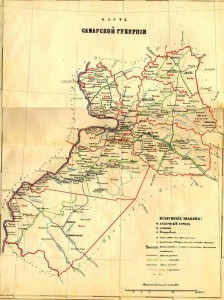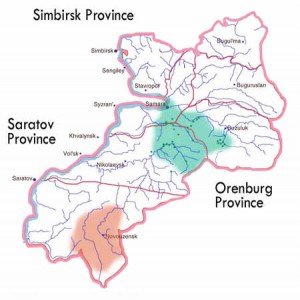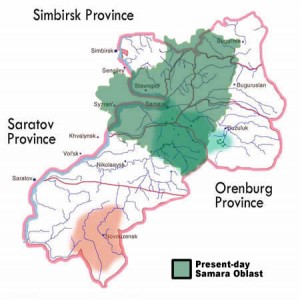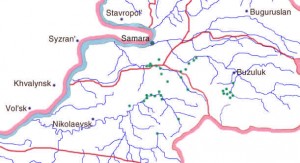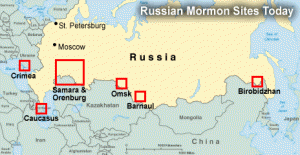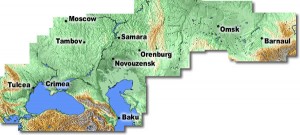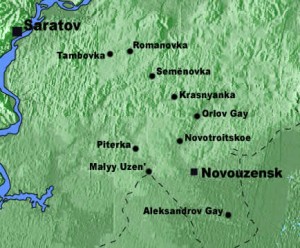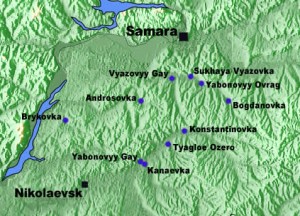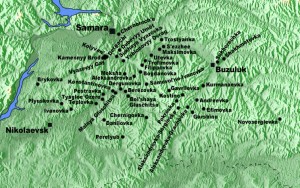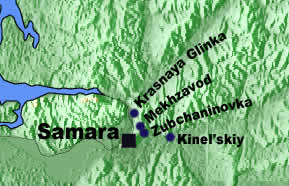The roofed cross with a single bar appears to be a distinctive Samara “Mormon” symbol. However, a triple-bar roofed cross is simply a stylistic variation on Russian Orthodox crosses.
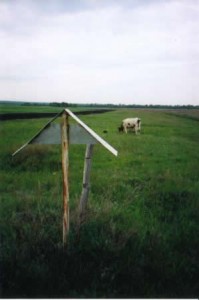
“Mormon cross” in Yablonovyy Ovrag
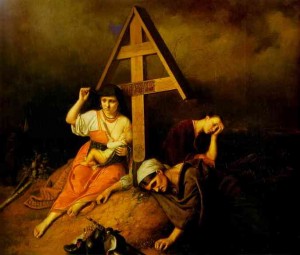
Orthodox Cross with roof variation
Browning and Eliason spoke with two sextons and the cemetery director at Mekhzavod, who told the American researchers that the peaked cross lacking the three Orthodox crossbars indicates an Old Believer grave. The cemetery director was himself a practicing Old Believer. In addition, I spoke with a middle-aged man (now a practicing Jehovah’s Witness) who was repainting his mother’s grave at Mekhzavod. He claimed that his mother (who was buried under a roofed cross) was probably an Old Believer, based on the songs that he remembered them to have sung. Recently, I found a photograph of an Old Believer graveyard in Karelia (northeastern Russia) that displays crosses very similar to those at Mekhzavod.
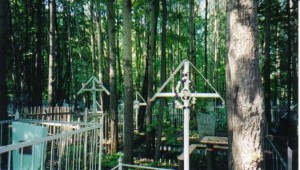
“Old Believer” crosses at Mekhzavod, Samara
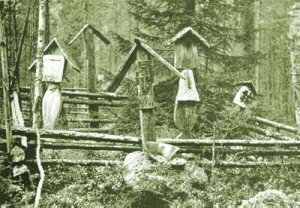
Old believer crosses in Karelia
I contend that the roofed crosses at Mekhzavod are a recently adopted symbol (within the last 50 years) used by a group originally known as Russian “Mormons”. The evidence for this assertion lies in the village of Yablonovyy Ovrag (“Apple Ravine”) southeast of Samara. Mormonism appeared in this village as early as 1897, and for three decades the Mormons were a prominent sect along with a large Molokan population. The last Mormon presbyter was sentenced to a concentration camp in 1931. However, the Mormons left behind a distinct graveyard where several of their sect were buried in the mid-1900s. Three graves remain today. The original wooden cross of one of the graves was clearly fashioned after the Orthodox model (three horizontal bars). However, Raisa Pavlovna Denisova, a granddaughter of the prominent Mormon Korabelnikov family, remembers that a “Mormon from Samara” came and replaced the deteriorating crosses with metal ones. The new crosses are exact replicas of Mekhzavod “Mormon” crosses. This connection establishes two important facts. First, the historical Mormons of Yablonovyy Ovrag are directly related to those now living in Mekhzavod. This means that the Mekhzavod Mormons were originally Russian Mormons, not Old Believers. Second, the replacement of the old Orthodox wooden cross with a metal Mekhzavod “Mormon” cross indicates that the distinct Mekhzavod gravemarker is a new symbol, probably adopted within the last 50 years.
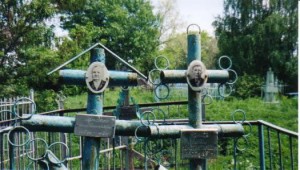
Husband and Wife with different styles
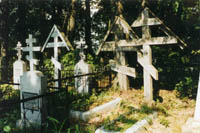
Crosses in Lithuania
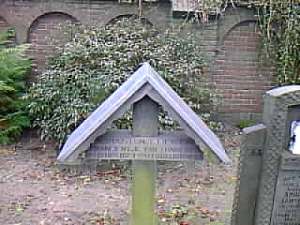
Cross in the Netherlands
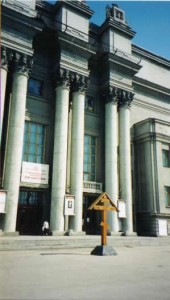
Cross on a plaza in Samara
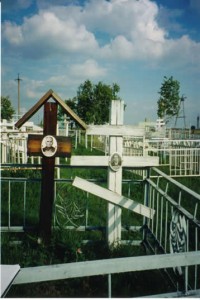
Husband and Wife contrasting styles

